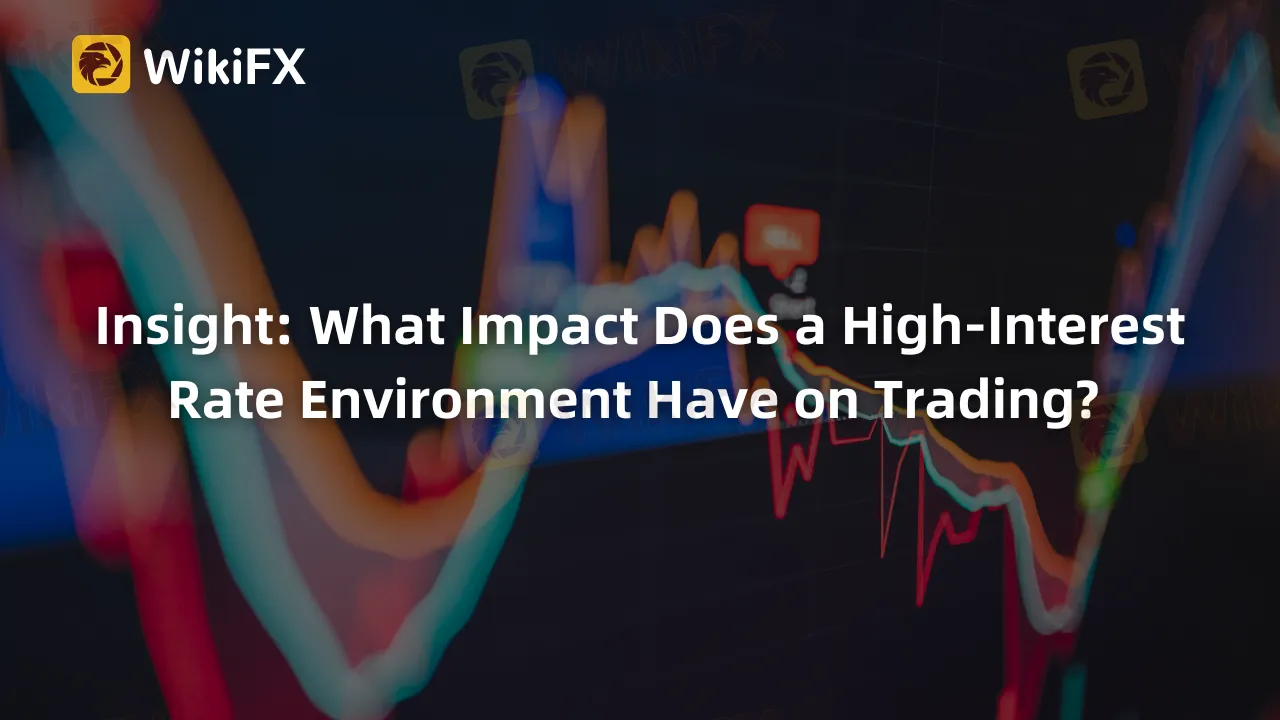简体中文
繁體中文
English
Pусский
日本語
ภาษาไทย
Tiếng Việt
Bahasa Indonesia
Español
हिन्दी
Filippiiniläinen
Français
Deutsch
Português
Türkçe
한국어
العربية
Insight: What Impact Does a High-Interest Rate Environment Have on Trading?
Abstract:Trading in a low-interest-rate environment poses both challenges and opportunities due to increased market volatility and inflation. However, strategies like dividend investing and growth investing can be lucrative. Traders need a comprehensive understanding of market dynamics and a well-defined strategy for effective navigation.

For traders eyeing a high-interest-rate landscape, understanding the intricate dynamics at play is paramount. This educational article aims to demystify key considerations, outlining strategies for effective maneuvering, and highlighting both risks and benefits.
At the outset, comprehending the market forces underpinning high-interest-rate scenarios is vital. Increased interest rates often stimulate demand for assets, potentially catalyzing trading activity. While this surge provides traders with increased buying and selling opportunities, it also escalates risk since asset prices can swiftly fluctuate in response to interest rate alterations.
Volatility is a prominent character in high-interest-rate environments. Exorbitant interest rates can precipitate swift market price adjustments, necessitating traders to anticipate sudden and substantial losses. Consequently, adopting a lucid trading strategy that factors in potential volatility is fundamental.
Inflation is another concern in high-interest-rate scenarios. Higher interest rates can accelerate the cost of goods and services, indirectly affecting investment values. Therefore, recognizing inflation potential and being ready for possible losses is crucial for traders.
Finally, in a high-interest-rate environment, the potential for currency risks should not be overlooked. Rising interest rates can correspondingly elevate a currency's value, diminishing the worth of investments denominated in that currency, and leading to potential losses.

Despite these challenges, high-interest-rate environments offer several benefits:
Enhanced Profits: The potential for amplified profits due to heightened returns on investments makes high-interest environments appealing to traders.
Leveraging Opportunities: High-interest rates can facilitate increased leverage for traders by lowering borrowing costs and enabling higher risk assumptions with reduced volatility exposure.
Improved Cash Flow: Higher interest rates may yield more investable cash, enabling traders to exploit market opportunities and potentially magnify profits.
Heightened Market Liquidity: High-interest rates can bolster market liquidity, allowing swift position entry and exit, especially beneficial for short-term traders or those requiring immediate liquidity access.
Reduced Borrowing Costs: High-interest rates can decrease borrowing costs, advantageous for traders requiring capital to fund trading activities.
Trading strategies suitable for high-interest-rate environments include:
Carry Trade: Borrowing in low-interest-rate currencies and investing in high-interest-rate currencies to exploit the interest rate differential.
Interest Rate Swaps: Trading fixed interest rate payments for floating ones on a specific debt instrument to capitalize on a higher fixed interest rate while also benefiting from possible floating rate hikes.
Cash and Carry Trade: Buying an asset while concurrently selling a futures contract on the same asset to benefit from a higher spot price and potential future price increases.
Short Selling: Selling an asset expected to depreciate in value, buying it back at a lower price when the value decreases to exploit a lower spot price and potential price reductions.
In conclusion, trading in a high-interest-rate environment can offer substantial gains but comes with inherent risks. By understanding market dynamics and being prepared for volatility, inflation, and currency risks, traders can better mitigate potential losses. Always remember, a well-devised trading strategy is essential for success in these scenarios.
Download and install the WikiFX App on your smartphone to stay updated on the latest news.
Download the App here: https://social1.onelink.me/QgET/px2b7i8n

Disclaimer:
The views in this article only represent the author's personal views, and do not constitute investment advice on this platform. This platform does not guarantee the accuracy, completeness and timeliness of the information in the article, and will not be liable for any loss caused by the use of or reliance on the information in the article.
Read more

Top Currency Pairs to Watch for Profit This Week - March 31, 2025
Discover the top 5 currency pairs to trade for profit this week, March 31, 2025—USD/JPY, EUR/USD, GBP/USD, AUD/USD, USD/CHF—with simple strategies and best times.

Stock Market Trading Volume Drops by 97.58 Billion Naira This Month
In February, Nigeria's stock market trading volume dropped by 97.58 billion naira, with foreign investors pulling back. Can domestic investors sustain the market?

AI-Powered Strategies to Improve Profits in Forex Trading
Boost Forex profits with AI: predictive analytics, real-time automation, and smart risk management strategies for sharper trades and fewer losses.

Exposed: Deceptive World of Fake Trading Gurus – Don’t Get Fooled!
The internet is inundated with advertisements and promotions from self-proclaimed trading gurus who promise to teach you how to become a successful trader and earn a substantial secondary income. These individuals often claim that their trading techniques can make you rich, even if you have zero experience. However, these assertions are typically false, and many people fall victim to these scams. This article aims to expose these fake trading gurus, explain how they operate, and provide tips on how to avoid being scammed.
WikiFX Broker
Latest News
How Crypto Trading Transforms FX and CFD Brokerage Industry
UK would not hesitate to retaliate against US tariffs - No 10 sources
FCA Warns Against 10 Unlicensed or Clone Firms
CySEC Warns Against 14 Unlicensed Investment Websites
Top Currency Pairs to Watch for Profit This Week - March 31, 2025
Navigating the Intersection of Forex Markets, AI Technology, and Fintech
Exposed: Deceptive World of Fake Trading Gurus – Don’t Get Fooled!
AI-Powered Strategies to Improve Profits in Forex Trading
Stock Market Trading Volume Drops by 97.58 Billion Naira This Month
The One Fear That’s Costing You More Than Just Profits
Currency Calculator







